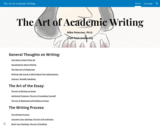
OER textbook for college composition courses.
- Subject:
- Composition and Rhetoric
- English Language Arts
- Material Type:
- Textbook
- Author:
- Mike Peterson
- Date Added:
- 10/05/2022

OER textbook for college composition courses.
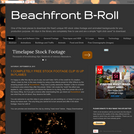
A place to download (for free!) unique HD stock video footage and animated backgrounds for any production or educational purpose. All clips in the library are completely free to use and are a simple "right click save" to download.

This course introduces undergraduate planning students to the role of the planner in researching issues in cities both in the United States and abroad. This course is a practical, hands-on workshop that challenges students to research, write and present their ideas on two different cities: A U.S. City (preferably somewhere close) and Copenhagen. Students will be equipped to:
select and research a thesis topic,
work professionally with faculty and other experts on the topic of their choice, and
research, write and present.
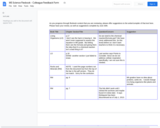
This document might be a solid example of how carefully and collaboratively open resources may be curated by teams of educators.
I left the content in as the main example here, because the form itself is very simple. I have found that district leaders are sometimes interested early on in what it "looks like" to have teachers exert this level of agency over the resources they are curating in such an initiative. I think this can also be valuable for teachers new to the work. Knowing that their professional voice could be leveraged in such a way to create custom materials can be empowering.
Specifically, this tool used as a live form between a team of teachers co-editing a text-based resource on CK-12's platform for "flexbook" creation/curation. The work of alignment to standards and local curriculum was done in a collaborative face to face setting, and then the more fine-grained edits for specific content alignment, factual correctness, and vocabulary synchronicity were done asynchronously through forms such as this one.
Finally, it is important to note that a district curriculum and instruction expert in this area was also involved in vetting some of the edits you see suggested here.
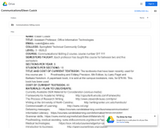
This course is a continuation of Communications/Editing 1 (OIT-110). Continued emphasis will be on preparing professionally written business documents for a variety of purposes using current technology. Students will also acquire project management skills and experience. Three lecture hours. Prerequisite for this course is completion of OIT-110 with a grade of C or better.
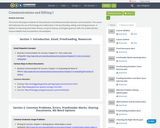
Syllabus and materials for the first half of a course that prepares students to produce professional written business communications. In addition to improving information literacy, computer literacy, and English grammar skills, students will improve abilities that are essential in the workplace. Includes links to OER readings, videos, and activities.
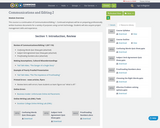
Syllabus and materials for the second half of a course that prepares students to produce professional written business communications. In addition to preparing professionally written business documents for a variety of purposes using current technology, students will acquire project management skills and experience. Includes links to OER readings, videos, and activities.
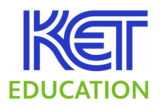
Reading and creating comic strips and comic books are engaging ways to promote literacy at any grade level and across content areas. The students in this video are members of a high school comic book club and have access to drawing tablets and Adobe Photoshop, so they can achieve sophisticated results. Even without such software, however, teachers can still integrate digital comics into a wide range of teaching situations.
There are a number of comic books, especially contemporary ones, that are not “school appropriate,” so you might want to guide students’ web research on comic books.
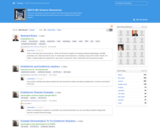
This online, shared Diigo group is an example of one strategy for collaboratively archiving, aggregating, aligning and curating open and free resources. This group was actively used from 2014-2017 to supplement another team project to curate custom CK-12 Flexbooks for all Middle School Science modules. Items were archived and shared here to be vetted for inclusion by other faculty as well as district level Science Coordinators.Some of the advantages to using Diigo in this way are as follows:
Diigo allows an extension to be easily placed directly into the Chrome or Safari browser, thereby making it handy at the very point of discovery of the resource. There is no need to copy a URL and then go elsewhere to open another tool or service for entry. In working with faculty on such projects, we have found that limiting the number of steps between discovery of a resource and its ultimate inclusion in student-facing products is valuable.
This approach also allows a very transparent running archive for the entire team, allowing your content experts to do their thing in an effective manner.
Some of the details that make this effective are the ability to comment on submitted resources, thus generating a running conversation, direct editing of submissions for accuracy and alignment, etc.
We also utilized the ability to employ a common group dictionary of tags. This is important so that tags are useful and not splintered into many such as: “7thGrade,” “7th Grade,” “Seventh Grade,” and so on.
Annotation and markup is also available right at the point of discovery, and this markup also shows clearly in the running archive of the shared group.
The service is free to use, and even the group function is free as long as the group is public-facing. In the spirit of #GoOpen, this more than fits.
All of the work can also be exported for long-term archiving if this is a need.
One key thing to note, is that we actually used state standards as tags as well. At the time, this led to the potential for a very laser-focused conversation regarding whether or not resources truly facilitated work directly on the standard, or just “in the area of the standard,” which can be a concern at times. However, these were not NGSS standards at the time, and I want that to be clear. These are all solid resources for the application, but the alignment would certainly shift when cross-walking to NGSS.
(two sample screenshots below)
https://goopen.us/wp-content/uploads/2019/04/Screenshot-2019-04-10-11.15.51.pn
https://goopen.us/wp-content/uploads/2019/04/Screenshot-2019-04-10-11.17.23-1024x725.png
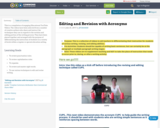
This is a compilation of engaging Educational YouTube Videos. The videos have been selected from a number of creative authors who share and instruct the techniques they use in regards to the revision and editing portion of the writing process. They have been placed together and arranged with the purpose of differentiating the instruction of students on a variety of levels within a regular or special education setting.

The 11th grade learning experience consists of 7 mostly month-long units aligned to the Common Core State Standards, with available course material for teachers and students easily accessible online. Over the course of the year there is a steady progression in text complexity levels, sophistication of writing tasks, speaking and listening activities, and increased opportunities for independent and collaborative work. Rubrics and student models accompany many writing assignments.Throughout the 11th grade year, in addition to the Common Read texts that the whole class reads together, students each select an Independent Reading book and engage with peers in group Book Talks. Students move from learning the class rituals and routines and genre features of argument writing in Unit 11.1 to learning about narrative and informational genres in Unit 11.2: The American Short Story. Teacher resources provide additional materials to support each unit.

In this unit, students will explore great works of American literature and consider how writers reflect the time period in which they write. They will write two literary analysis papers and also work in groups to research and develop anthologies of excellent American stories.
ACCOMPLISHMENTS
Students read and analyze stories from several 19th-, 20th-, and 21st-century American authors. After researching a time period, they select stories from that period to create an anthology. The readings enhance their understanding of the short story, increase their exposure to well-known American authors, and allow them to examine the influence of social, cultural, and political context.
Students examine elements of short stories and have an opportunity for close reading of several American short stories. During these close readings, they examine the ways that short story writers attempt to explore the greater truths of the American experience through their literature.
GUIDING QUESTIONS
These questions are a guide to stimulate thinking, discussion, and writing on the themes and ideas in the unit. For complete and thoughtful answers and for meaningful discussions, students must use evidence based on careful reading of the texts.
If you were to write a short story about this decade, what issues might you focus on?
What defines a short story? Just length?
To what extent do these stories reflect the era or decade in which they were written?
To what extent are the themes they address universal?
CLASSROOM FILMS
History.com has short videos on the Vietnam War (“Vietnam” and “A Soldier's Story”).

In this lesson, students will reflect on the main characters in the two short stories they have read recently. They will begin a short paper about these stories.

The 12th grade learning experience consists of 7 mostly month-long units aligned to the Common Core State Standards, with available course material for teachers and students easily accessible online. Over the course of the year there is a steady progression in text complexity levels, sophistication of writing tasks, speaking and listening activities, and increased opportunities for independent and collaborative work. Rubrics and student models accompany many writing assignments.Throughout the 12th grade year, in addition to the Common Read texts that the whole class reads together, students each select an Independent Reading book and engage with peers in group Book Talks. Language study is embedded in every 12th grade unit as students use annotation to closely review aspects of each text. Teacher resources provide additional materials to support each unit.

This project unit—a multimedia self-portrait published in digital form—is the capstone of your students' high school careers. It is a chance for them to pause and reflect on where they've been, where they're going, and who they are as a person. Students will reflect on what they want others to know about them: what they want their message to be and what types of media they might use to convey that message. Students will have the opportunity to express themselves in many different formats—through writing, of course, but also through other media of their choosing. Students will be able to convey your message through visual art, photography, a graphic novel, audio, poetry, or video—practically any type of media they want!
ACCOMPLISHMENTS
Students will complete a multimedia self-portrait, capturing important aspects of the essence of themselves.
Students will contribute one chapter from their multimedia self-portrait to a class anthology.
Students will present one chapter from their multimedia self-portrait to the class.
GUIDING QUESTIONS
These questions are a guide to stimulate thinking, discussion, and writing on the themes and ideas in the unit. For complete and thoughtful answers and for meaningful discussions, students must use evidence based on careful reading of the texts.
How is late adolescence a moment of internal and external change?
What are the most important qualities of your character—past, present, and future?
How can you portray these key aspects of yourself using multimedia?
BENCHMARK ASSESSMENT: Cold Read
During this unit, on a day of your choosing, we recommend you administer a Cold Read to assess students’ reading comprehension. For this assessment, students read a text they have never seen before and then respond to multiple-choice and constructed-response questions. The assessment is not included in this course materials.
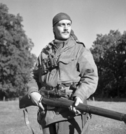
Now it’s time for students to start planning their written chapter. They’ll read prior journal entries and written assignments to help them decide what they want to write about. As they start planning, they’ll consider what anecdotes and memorable characters to include and create a timeline of events.

How can students enhance the written chapter of their self-portrait? They’ll review different types of artifacts that they can add to their written chapter, such as images, video, and audio. They’ll decide which artifacts they want to include and make plans to create them.
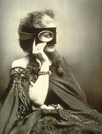
Today, you will demonstrate how much you know about writing an effective argument.In this lesson, you will administer a Benchmark Assessment (Cold Write) to determine what students have learned about argument writing. Students will respond to a prompt, and then you will assess each student’s argument using the scoring guide. Students have had the opportunity to write an argument earlier in the year; this final assessment will show their growth as writers and their mastery of the genre. To see individual students’ progress in argument writing, compare the scoring guides from previous Cold Writes.

In our lives, we are constantly telling stories to ourselves and to others in an attempt to both understand our experiences and present our best selves to others. But how do we tell a story about ourselves that is both true and positive? How do we hold ourselves up in the best possible light, while still being honest about our struggles and our flaws? Students will explore ways of interpreting and portraying personal experiences. They'll read Chinua Achebe's novel Things Fall Apart , analyzing the text through the eyes of one character. They'll get to know that character's flaws and strengths, and they'll tell part of the story from that character's perspective, doing their best to tell an honest tale that presents their character's best side. Then they'll explore their own stories, crafting a personal narrative about an important moment of learning in his or her life.
ACCOMPLISHMENTS
Students read and analyze Chinua Achebe’s Things Fall Apart , viewing the events and conflicts of the novel through the eyes of one of the central characters.
Students write a two-part narrative project: one narrative told through their character’s perspective and one personal narrative about an incident in their own life.
GUIDING QUESTIONS
These questions are a guide to stimulate thinking, discussion, and writing on the themes and ideas in the unit. For complete and thoughtful answers and for meaningful discussions, students must use evidence based on careful reading of the texts.
How do our conflicts shape and show our character?
How can we tell a story about ourselves that’s both honest and positive?
How do definitions of justice change depending on the culture you live in?
What are ways individuals can react to a changing world? To a community that doesn’t accept us?
BENCHMARK ASSESSMENT: Cold Read
During this unit, on a day of your choosing, we recommend you administer a Cold Read to assess students’ reading comprehension. For this assessment, students read a text they have never seen before and then respond to multiple-choice and constructed-response questions. The assessment is not included in this course materials.
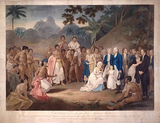
In this lesson, students will work with their writing groups to revise the first draft of their narrative, looking closely at descriptive language, as well as introductions and conclusions.